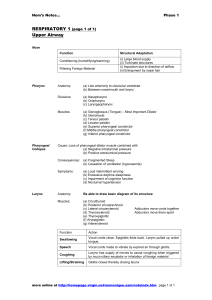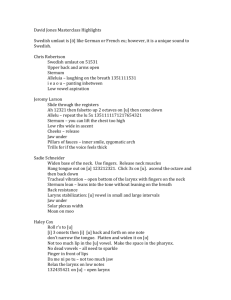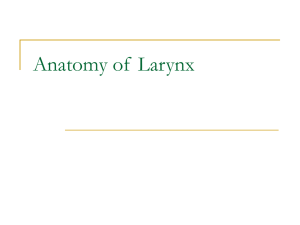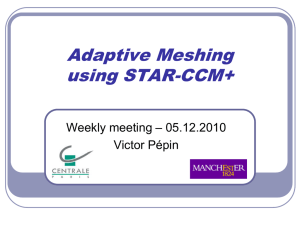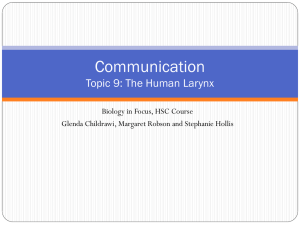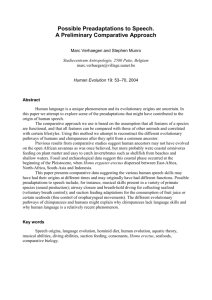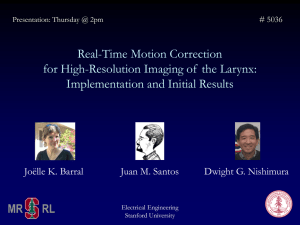Horse Airflow Model
advertisement
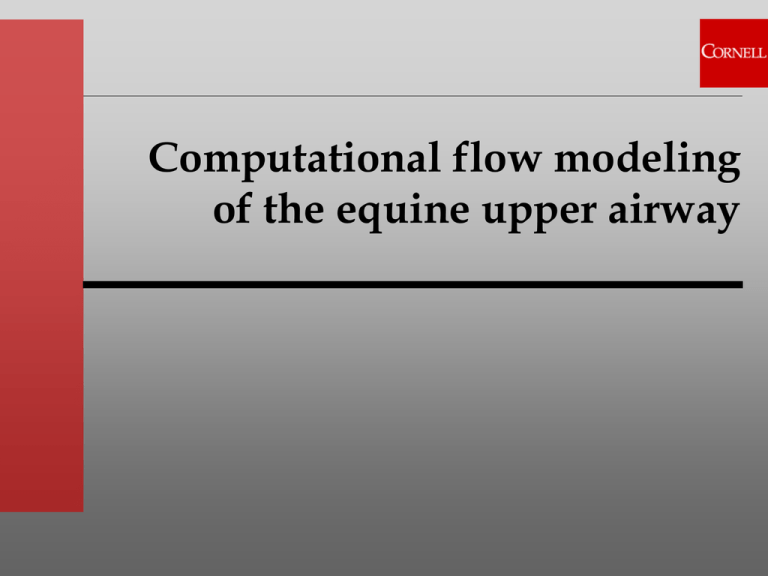
Computational flow modeling of the equine upper airway Introduction Objectives Development of a computational turbulence model for modeling flow through the equine airway • Prediction of the minimum larynx size required for normal airflow • Determination of flow and pressure characteristics on the soft palate • Basis for investigation of new management/ therapeutic approaches for many ailments affecting the equine respiratory system Modeling: Schematic of the Steps CT Scan 3D Reconstruction Mimics® Geometry Manipulation Magics® Change Abduction Surface Mesh Magics® Volume Mesh TGrid® Solve Flow Equations Fluent® Geometry Acquisition – CATSCAN Picker PQS CT scanner Slice thickness: 5 mm, Table index: 5 mm 3D Reconstruction Mimics Nasal cavity, Sinuses, Nasopharynx, Pharynx, Larynx and Cranial trachea Export Format: STL, Triangle defined 3D Geometry Geometry Manipulation Magics • Removal of Unwanted parts • Smoothing • Creation of inflow and outflow surfaces Surface Mesh Magics • Mesh Refinement to improve Mesh Quality • Skewness should be less than 0.85 for subsequent interior mesh generation and numerical analysis Volume Mesh TGrid Schematic Solve Flow Equations Governing Equations Reynolds Averaged Navier-Stokes Equation: Boussinesq Approximation: Standard k-e Model Boundary Conditions • Atmospheric pressure at inlet • Outlet Pressures (30 cm from the larynx) shown in the Figure • Reynolds Number ~ 80000 • Turbulence intensity • Inlet: 1% • Outlet: 5% • Hydraulic Diameter • Inlet: 0.057 • Outlet: 0.071 Fig. Tracheal Pressures in exercised horses ( Nielan, Rehder, Ducharme, & Hackett, 1992) Results Model Validation Table 1: Comparison of modeled and measured flows Inspiratory Peak Flow Rate (L/s) Expiratory Peak Flow Rate (L/s) Model Computed Values 65.2 31.2 Experimental Values (Nielan et al, 1992) 65.5 84.0 Model Validation (contd..) 40 20 flow (L/s) 0 0 0.2 0.4 0.6 0.8 1 1.2 -20 -40 -60 -80 time (s) Figure : Volume flow across the tracheal outlet (L/s). Inspiratory flows are negative, expiratory are positive. Figure : Flow trace of a galloping horse. The corresponding pressure trace for this horse has two-fold higher exhalation pressures than those used for the model. Flow Profile Flow Profile- Discussion Flow velocities are higher at the bottom of the nasal passage. Eddies are formed in the sinuses Flow across the Larynx Average Flow Velocity = 26.9 m/s Pressure = -4300 Pa Reynolds Number = 63000 Velocities are mostly uniform across the larynx. The velocity near the walls are lower as expected. Velocity Velocities across the nostril (inlet2) larynx, and outlet 20 velocity (m/s) 10 0 -10 0 0.2 0.4 0.6 0.8 1 velocity magnitude on inlet2 -20 velocity magnitude on larynx -30 velocity magnitude on outlet -40 -50 time(s) Figure 10: Computed average velocities at different cross sections in the nasal cavity Summary Limitations • Enhancement in the model by changing the geometry to improve prediction in the exhalation phase of breathing Future Work • Incorporate Temperature and Moisture Transport • Analysis for different degree of abduction of the larynx 50% Abduction of the larynx 75% Abduction
